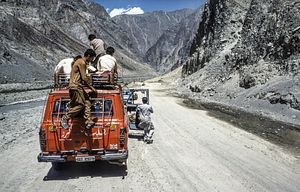In Pakistan, controversy continues to grow around the China-Pakistan Economic Corridor (CPEC), a multi-billion dollar economic agreement between the China and Pakistan that promises to build an economic trade corridor along the length of Pakistan, connecting western China to the Arabian Sea. Specifically, the corridor aims to connect Gwadar port in Balochistan to China’s Xinjiang region through a network of highways, railroads, and pipelines, spread over 3,000 kilometers.
For energy-starved Pakistan, the project is likely to add more than 25,000MW of electricity capacity across the national grid through different energy-related projects. If implemented successfully, CPEC has the potential to transform Pakistan into a thriving economy. However, its successful implementation is only possible if there is internal political unity among all of Pakistan’s provinces. This requirement, unfortunately, is difficult to achieve, putting the entire project in jeopardy.
Traditionally, Pakistan has experienced bitter inter-provincial relations in addition to difficult core-periphery relations. The prevailing controversy over CPEC is a glaring illustration of this chronic problem, which has only harmed Pakistan’s development.
While Pakistan’s federal government has repeatedly said that CPEC is a national project, the country’s outer provinces have raised concerns about the unfair distribution of resources under the project. In a recently held All Parties Conference (APC), Balochistan’s opposition parties maintained that a great deal of the energy projects under CPEC were transferred to Punjab. Khyber Pakhtunkhwa (KP), meanwhile, has also raised similar concerns.
The western route of CPEC remains at the center of all the controversy. The federal government on many occasions has promised to build up the western route, which would benefit Balochistan and KP. However, its implementation remains unlikely. Despite the government officially inaugurating the construction of the western route a few weeks ago, opposition parties from smaller provinces maintain that the actual map of the route has been altered.
Gwadar, which is arguably the centerpiece of this development project, remains a neglected area on the country’s periphery. The port is set to become a future economic hub. “The whole area has been captured by the government with local people pushed aside,” said a local resident of Gwadar area. This apparent unfair distribution of resources will further push away angry Baloch leaders, who have rebelled against the federal government before because of similar issues.
Moreover, Pakistan’s federal government has promised to raise a special military force to protect construction along the CPEC route, but many believe that this is not a viable solution as far as security is concerned. “The corridor passes through what is currently the heart of the insurgency,” said the economic adviser to Balochistan’s chief minister. He added that the notion that two special brigades formed by the army will be enough to protect road traffic is “laughable.”
For Pakistan, this proposed corridor is not only important for economic reasons, but also for other strategic and political reasons. Pakistan has managed to convince China about the operational viability of this project amid several internal challenges, including its unstable internal security situation to national separatist movements, which threaten CPEC very directly.
So far, the outer provinces have mainly expressed their apprehensions through democratic dialogue, but the situation might escalate if their legitimate concerns are not addressed quickly. While there is no denial about the strategic significance of CPEC for Pakistan at the state level, its successful implementation remains a dream at this point as controversies and disputes arose before construction could even begin in earnest. If the federal government wants to implement CPEC successfully, it needs to address all the outstanding concerns of the smaller, outer provinces. It cannot afford to let Punjab and Sindh dominate the process.

































